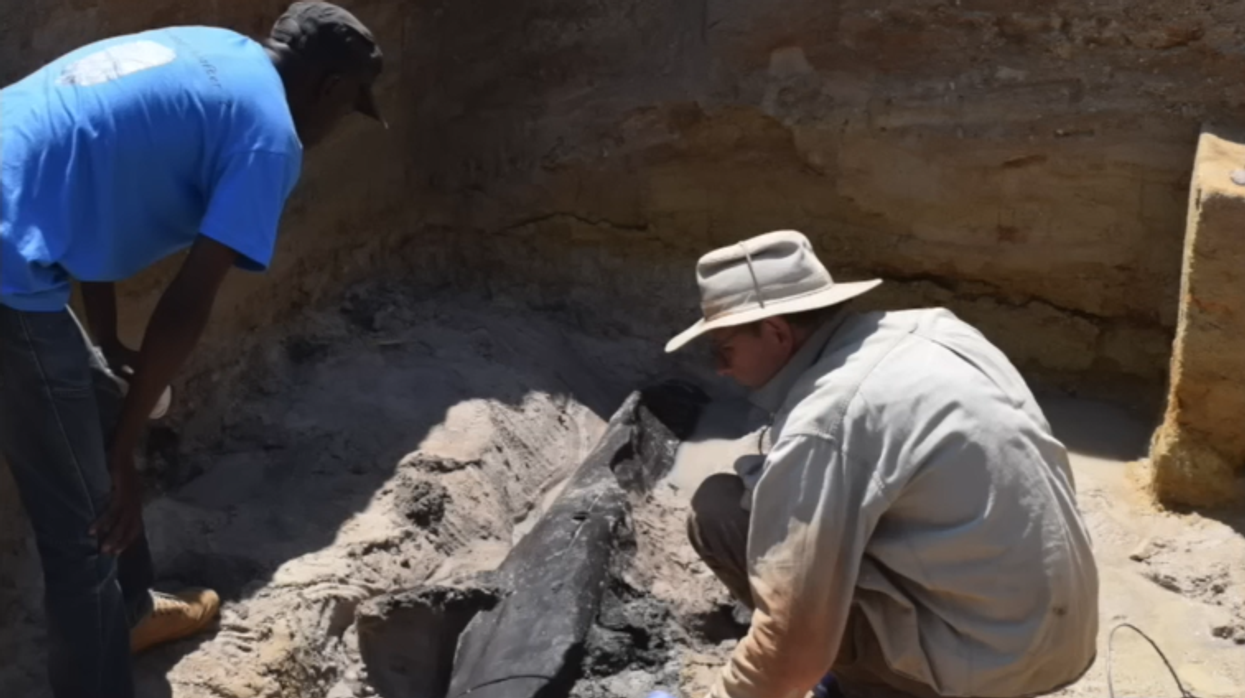
YouTube HLC Digital Video Screenshot

Archaeologists discovered the world's oldest wooden structure, said to be almost half a million years old.
A team of archaeologists unearthed a simple wood structure along a riverbank in Africa. At the dig site, researchers found two bush willow tree logs that appeared to have been manipulated by ancient humans approximately 476,000 years ago. The archaeology discovery makes it older than homo sapiens – believed to have emerged around 300,000 years ago.
Scientists believe that the high water levels from the nearby Kalambo Falls and fine sediment encased the structure to help preserve the wood.
The study of the oldest wooden structure was published in the journal Nature, and declared that archaeologists had discovered "the earliest evidence for structural use of wood in the archaeological record."
According to CNN, "The wood pieces were too old to be directly dated using radiocarbon techniques. Instead, the team used a technique called luminescence dating, which involved measuring the natural radioactivity in minerals in the fine sediment that encased the wood to figure out when it was last exposed to sunlight."
Scientists have determined that ancient humans used stone tools to make notches in the wood to create an interlocking structure. The notches allowed the logs to have to interlock at a right angle.
"It didn't look particularly exciting. But when you look closely and you remove the sand around it, you can see where one sits on top of the other is a notch," said Larry Barham – professor of archaeology at the University of Liverpool.
"This thing was an intended component. It was, in a sense, engineered," Barham said.
"The finds show an unexpected early diversity of forms and the capacity to shape tree trunks into large combined structures," Barham added. "These new data not only extend the age range of woodworking in Africa, but expand our understanding of the technical cognition of early hominins."
Barham told Reuters, "The framework could have supported a walkway or platform raised above the seasonally wet surroundings. A platform could have multiple purposes, including storage of firewood, tools, food and as a foundation on which to place a hut."
“That the wood has remained in place and intact for half a million years is extraordinary. And it gives us this real insight, this window into this time period," said Professor Geoff Duller – coauthor of the study.
Duller noted, "Colleagues have made modern replicas of the stone tools that we see and worked woods of similar density, and we can see that the shaping of these marks is identical. So that’s what makes us really confident (that) this is not a natural process — it has been done intentionally using stone tools."
Architectural Digest reported, "The team’s recovery of additional wooden tools at the site (dated between 390,000 and 324,000 years old) further suggests that the area around this 772 foot waterfall was a popular spot for prehistoric humans."
Scientists had previously believed that humans were nomadic hunters and gatherers during the Stone Age. However, this discovery shows that early humans may have set up a more permanent living situation.
Meanwhile, the earliest known wood artifact is a 780,000-year-old fragment of polished plank found at the site of Gesher Benot Ya’aqov in Israel.
Like Blaze News? Bypass the censors, sign up for our newsletters, and get stories like this direct to your inbox. Sign up here!
The Earliest Wood Structure In The Worldwww.youtube.com